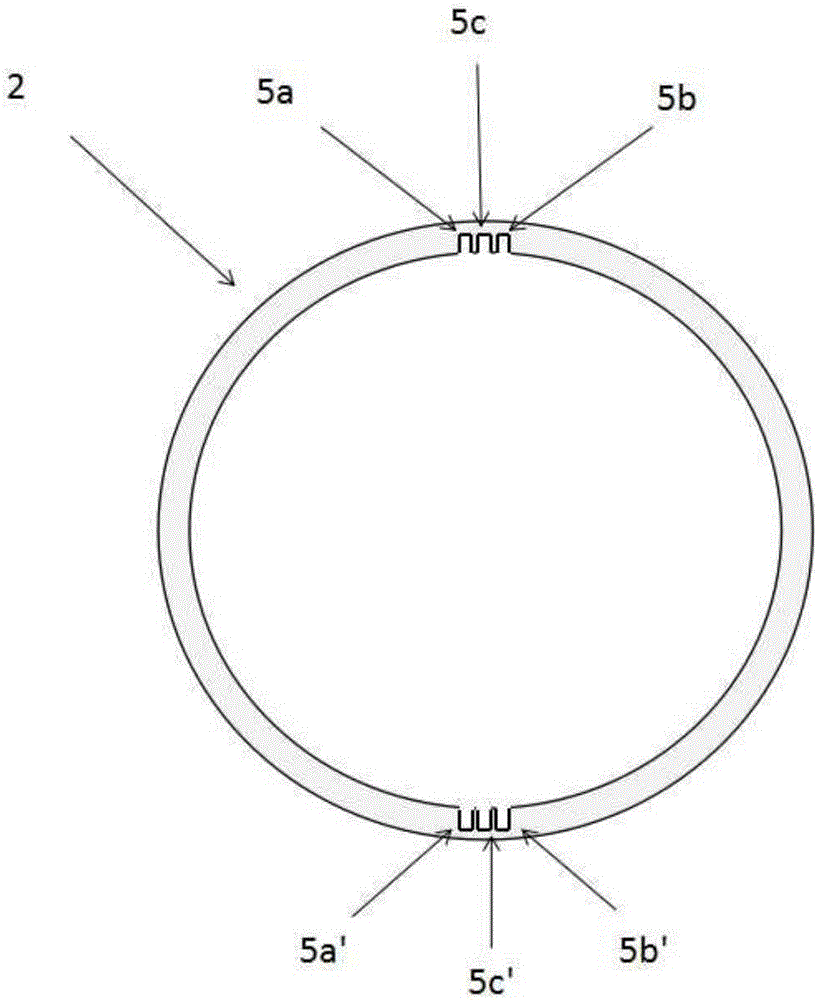Co-culture device for cell culture and cell-cell interaction and using method of co-culture device
A cell culture and co-culture technology, which is applied in the direction of tissue cell/virus culture devices, sterilization methods, biochemical equipment and methods, etc., can solve problems such as the inability to rule out gravity interference, limit the influence of tumor cell functions, and avoid The effect of cumbersome separation steps, wide applicability and low cost
- Summary
- Abstract
- Description
- Claims
- Application Information
AI Technical Summary
Problems solved by technology
Method used
Image
Examples
Embodiment 1
[0035] S1. Carrying out autoclaving and ultraviolet irradiation sterilization on the co-cultivation device;
[0036] S2. Insert a detachable semi-permeable membrane spacer 6 with an aperture size of 3 μm in the middle slot, and insert detachable spacers 7a and 7b into the slots on both sides;
[0037] S3. Adding the tumor cell suspension into the cell culture chamber 3 coated with matrigel under aseptic operation, allowing the tumor cells to sink in the matrigel, and stably growing and culturing in the cell culture chamber 3 for 3 days;
[0038] S4. On the 4th day, another cell culture chamber 4 was coated with poly-lysine, and another adherent cell was planted in the cell culture chamber 4 coated with poly-lysine. Cultured overnight at 37°C to make Adherent growth in cell culture chamber 4;
[0039] S5, detach the detachable spacers 7a and 7b, and co-culture the tumor cells and the adherent cells;
[0040] S6. Continue the co-cultivation, observe the formation of tumor cells ...
Embodiment 2
[0042] S1. Carrying out autoclaving and ultraviolet irradiation sterilization on the co-cultivation device;
[0043] S2. Insert a detachable semi-permeable membrane spacer 6 with an aperture size of 8 μm in the middle slot, and insert detachable spacers 7a and 7b into the slots on both sides;
[0044] S3. Adding the tumor cell suspension into the cell culture chamber 3 coated with matrigel under aseptic operation, allowing the tumor cells to sink in the matrigel, and stably growing and culturing in the cell culture chamber 3 for 3 days;
[0045] S4. On the 4th day, another cell culture chamber 4 was coated with poly-lysine, and another adherent cell was planted in the cell culture chamber 4 coated with poly-lysine. Cultured overnight at 37°C to make Adherent growth in cell culture chamber 4;
[0046] S5, detach the detachable spacers 7a and 7b, and co-culture the tumor cells and the adherent cells;
[0047] S6. Continue the co-cultivation, observe the tumor cell sphere forma...
PUM
| Property | Measurement | Unit |
|---|---|---|
| pore size | aaaaa | aaaaa |
Abstract
Description
Claims
Application Information
 Login to View More
Login to View More - R&D
- Intellectual Property
- Life Sciences
- Materials
- Tech Scout
- Unparalleled Data Quality
- Higher Quality Content
- 60% Fewer Hallucinations
Browse by: Latest US Patents, China's latest patents, Technical Efficacy Thesaurus, Application Domain, Technology Topic, Popular Technical Reports.
© 2025 PatSnap. All rights reserved.Legal|Privacy policy|Modern Slavery Act Transparency Statement|Sitemap|About US| Contact US: help@patsnap.com



